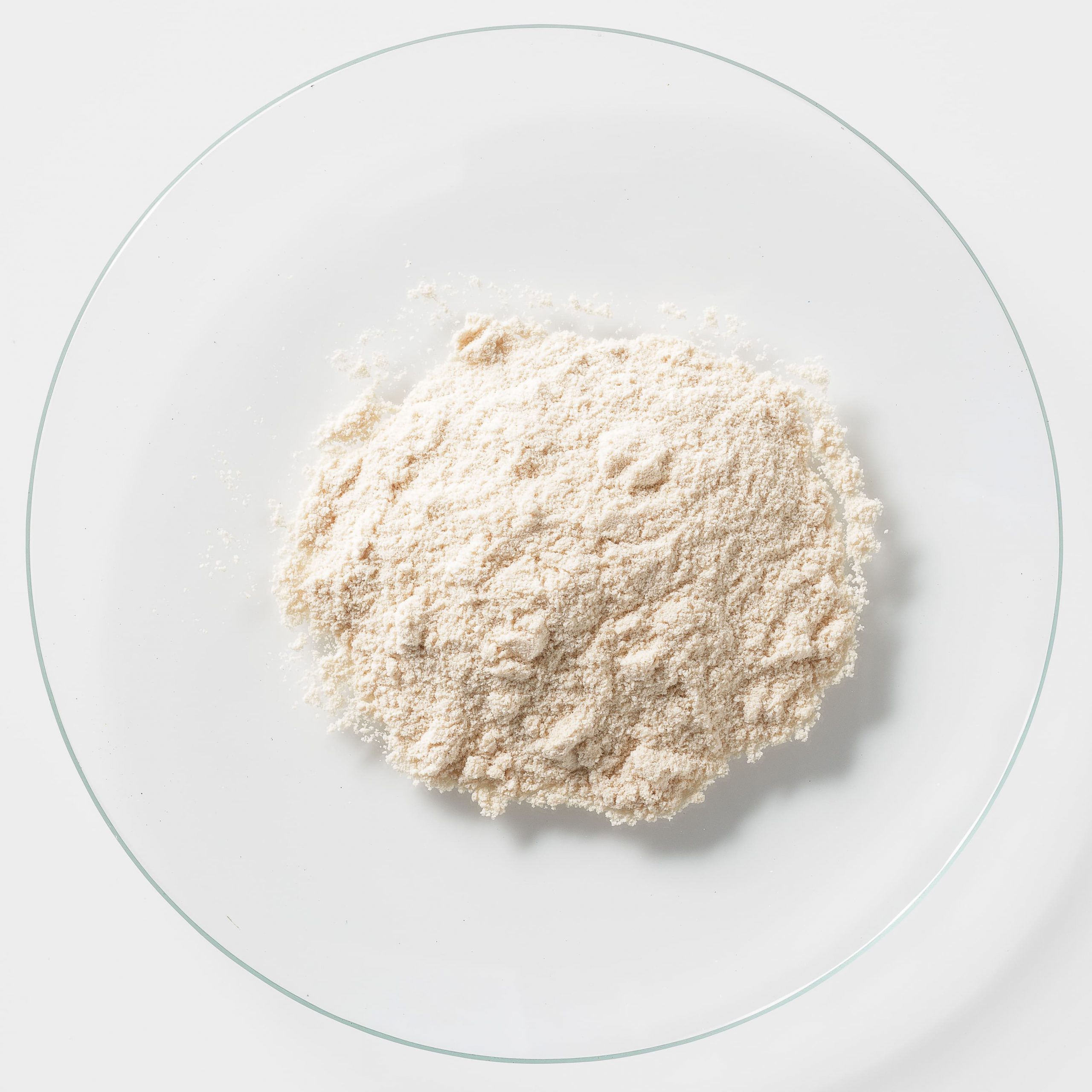PROFIBER
PROFIBER is a new functional material that is abundant in resistant proteins and dietary fiber produced from sake lees. It is made from domestically grown rice by our original fermentation technology. We also made sure to remove alcohol content so the final product fits easily for a wide range of customer needs.
General Information
| Functions | ・Gut flora improvement ・Lowering of visceral fat ・Oil adsorption and fat excretion |
|---|---|
| Form | Powder |
| Solubility | Insoluble in water |
| Content | More than 30% are indegestible ingredients: dietary fiber and resistant proteins |
| Form of delivery | 1 kg (product name: PROFIBER(S)) 10kg |
| Recommended intake | 500~750mg/day |
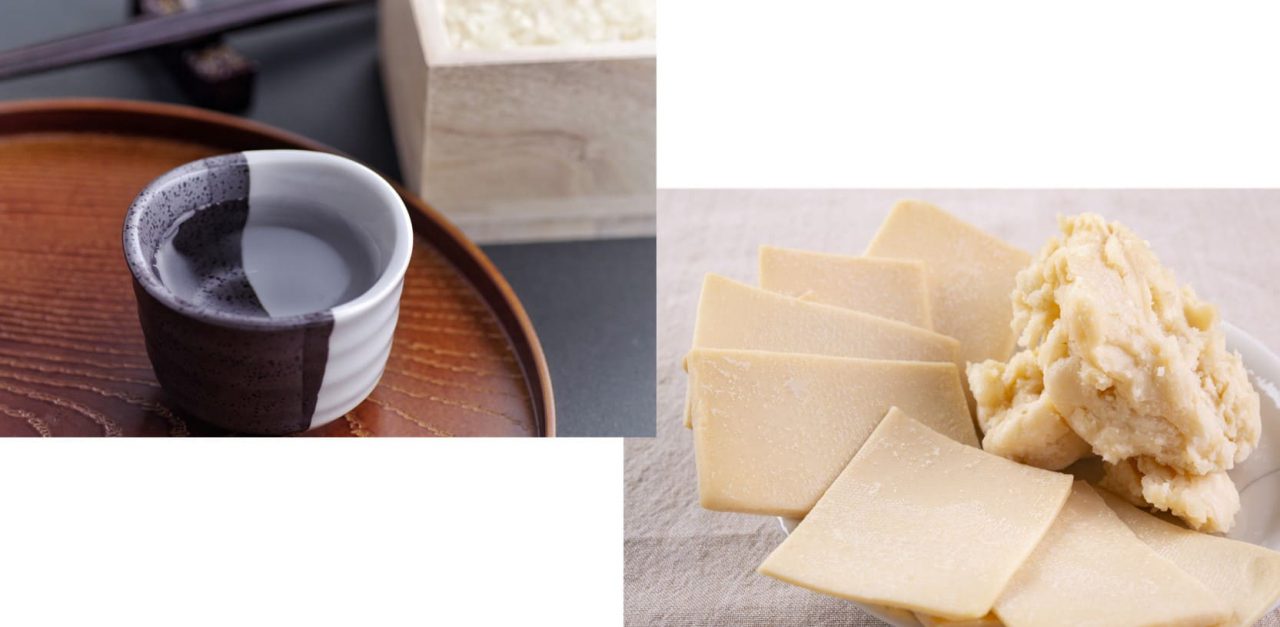
Table of Contents
1. Development Story
1-1 Health Benefits of Sake Lees
1-2 Two-step Fermentation Process
1-3 Composition of PROFIBER
2. Clinical Data
2-1 Gut Flora Imorovement
2-2 Oil Adsorption and Fat Exrection
2-3 Human Trials
- Development Story
- 1-1 Health Benefits of Sake Lees
Since ancient times sake less have been used by Japanese people in various traditional foods such as sweet rice-based drink amazake and hot soup sakejiru. By-product of sake production, sake lees are abundant in vitamins, minerals, and nutrients. Their contents are rich in protein and dietary fiber which makes products based on sake lees ideal for dietary use.
By efficiently collecting the know-how of sake brewing and the fermentation technology cultivation techniques over many years, it was possible for our company to produce PROFIBER original functional material of Yaegaki.
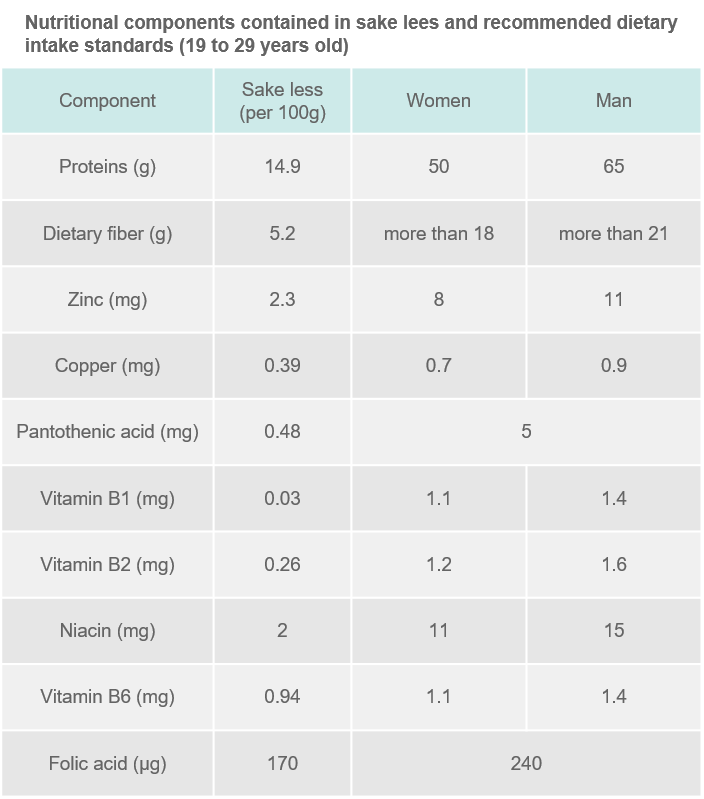
- 1-2 Two-step Fermentation Process
We produce PROFIBER in two steps. First, rice is fermented to produce sake and sake lees. Then, sake lees are fermented once again to induce and concentrate useful ingredient values.

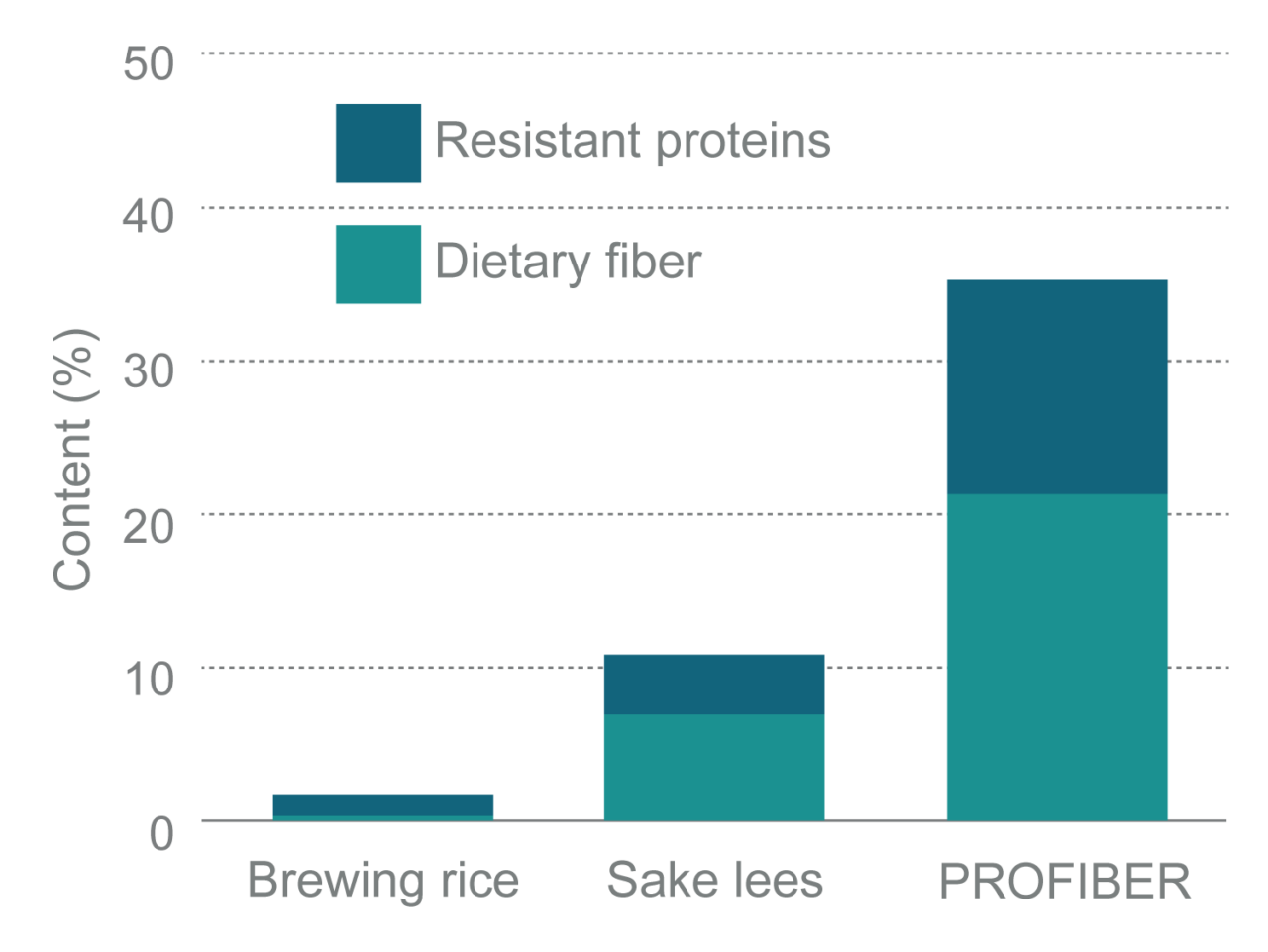
1-3 Composition of PROFIBER
PROFIBER mainly consists of dietary fiber and resistant proteins. Although these compounds are present in ordinary staple food such as rice, repeating fermentation process allows to enrich their content to a great extent. Dietary fiber content of PROFIBER is 75 times higher that this for rice, and the resistant protein concentration is 13 times higher.
What are Resistant Proteins?
Originally derived from rice storage proteins called prolamins, resistant proteins are protein remnants or indigestible protein complexes that show physiological functions in the intestine.
2.Clinical Data
- 2-1 Gut Flora Improvement
Questionnaire survey about PROFIBER role in improving bowel movement
We conducted a questionnaire research among females with constipation who took PROFIBER in order to understand how it can manage bowel movement. For the majority of subjects the stool volume and defecation freguency were improved, while unpleasenat odour was drastically reduced. This raises expectations that regular PROFIBER intake can normalize and improve the intestinal environment.
Trial Outline
・Subjects: 72 women with constipation
・Intake timing: Before sleep
・Dosage: 750mg/day
・Trial period: 2 weeks
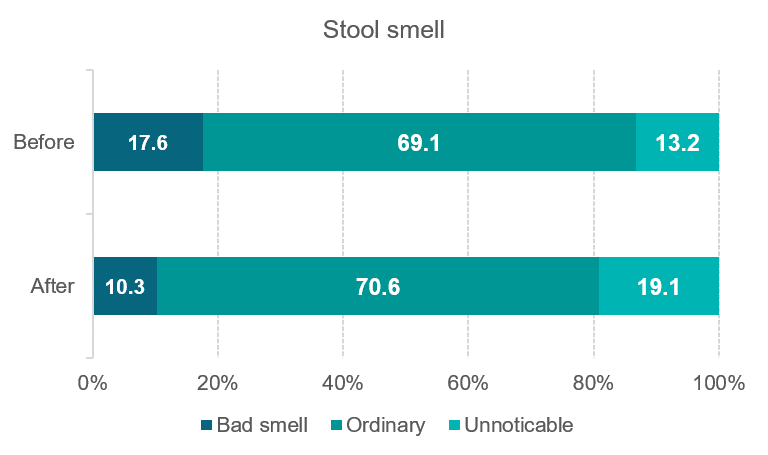
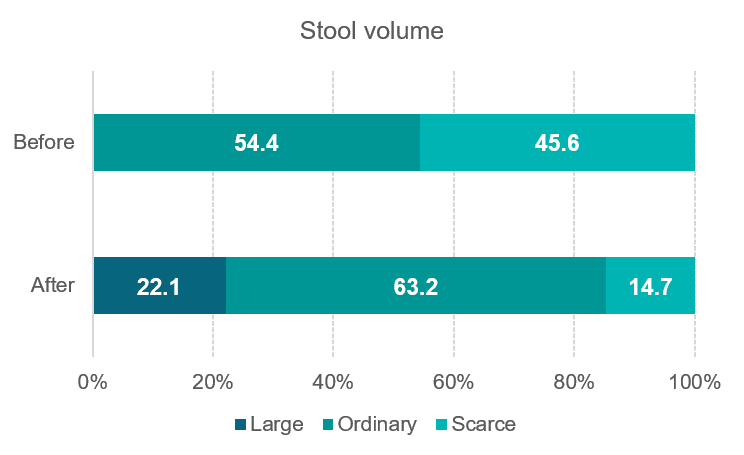
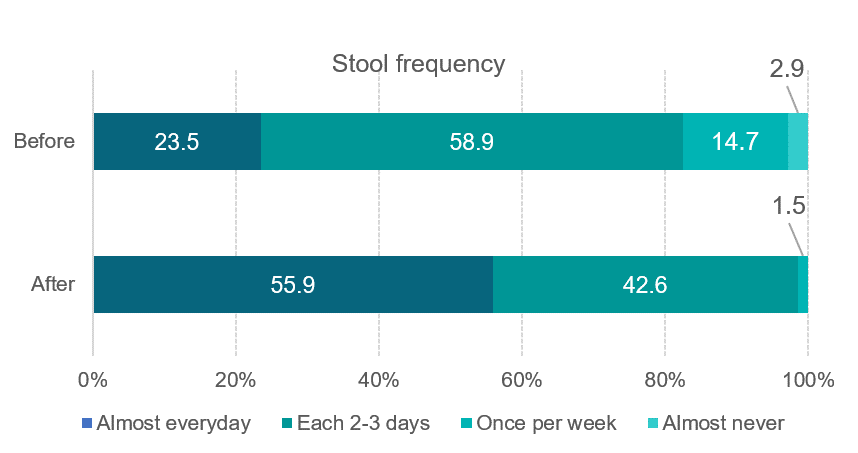
PROFIBER intake influences organic acid composition of rat feces
Trial Outline
① Laboratory rats were devided into two groups: PROFIBER group and control group (5 rats in each).
② After 4 weeks of trials the organic acid composition of the feces was examined.
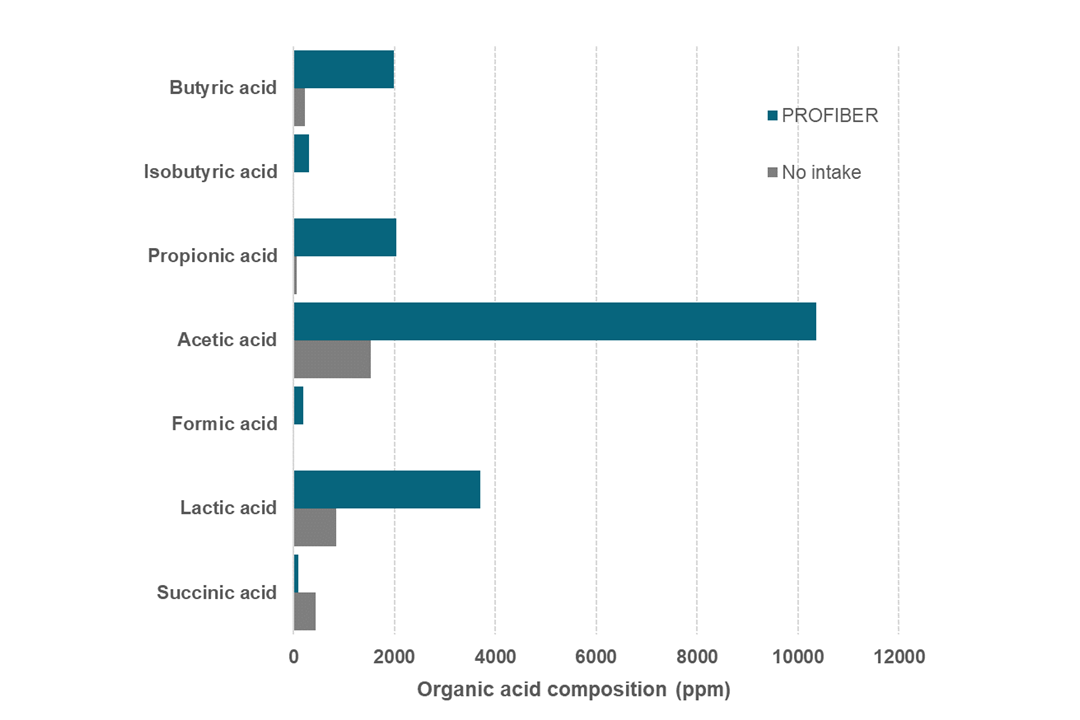
It is known that organic acids can inhibit the growth of harmful bacteria in the gut and promote peristaltic movement by acidifying the intestinal environment.
Our trials showed that intake of PROFIBER significantly increased organic acid composition in the rat feces compared to control group.
In particular, a remarkable increase was confirmed in lactic acid concentration (~4.4 times), acetic acid (~6.8 times), propionic acid (~29 times), and fatty acids (~8.6 times).
- 2-2 Oil Adsorption and Fat Exrection
Ramen chili oil was mixed with either PROFIBER or cellulose, then water was added and stirred well. The system was left for some time to observe that PROFIBER adsorbs oil well.
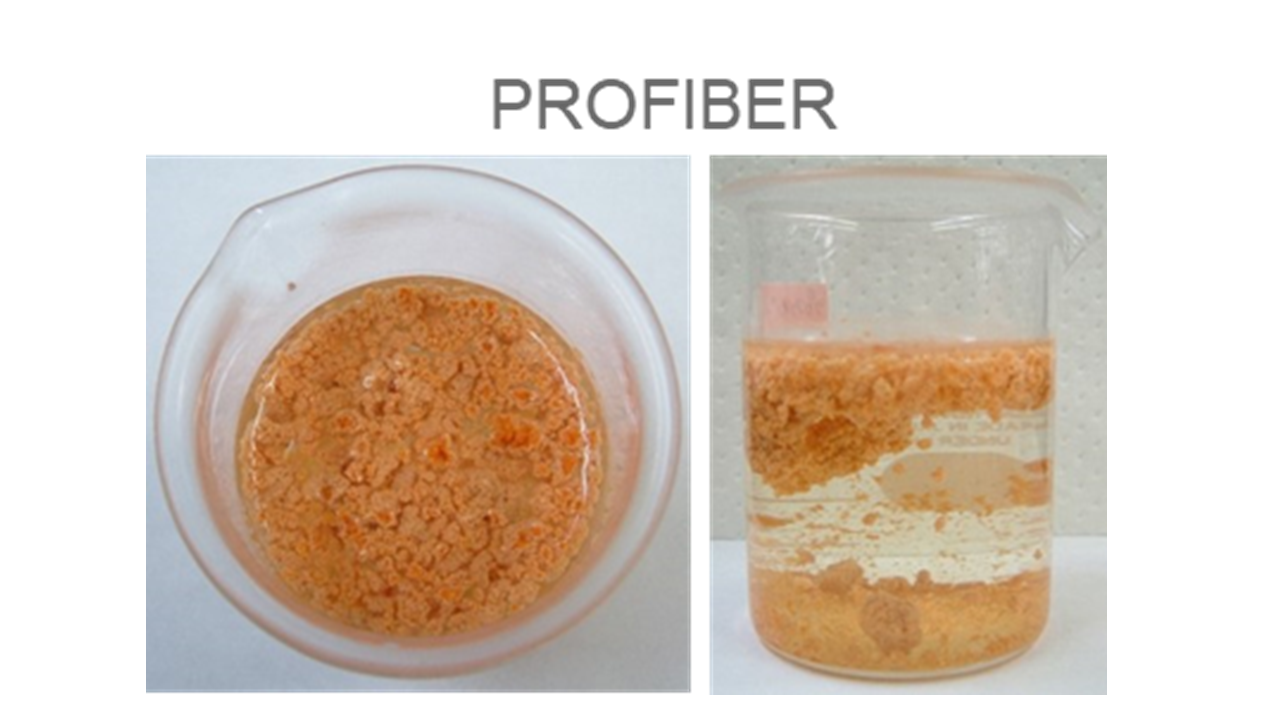
・Most of them remains floating on the liquid surface
・The solution is almost transparent
・The shape of lumps remains after mixing
・Strong molecular biding force
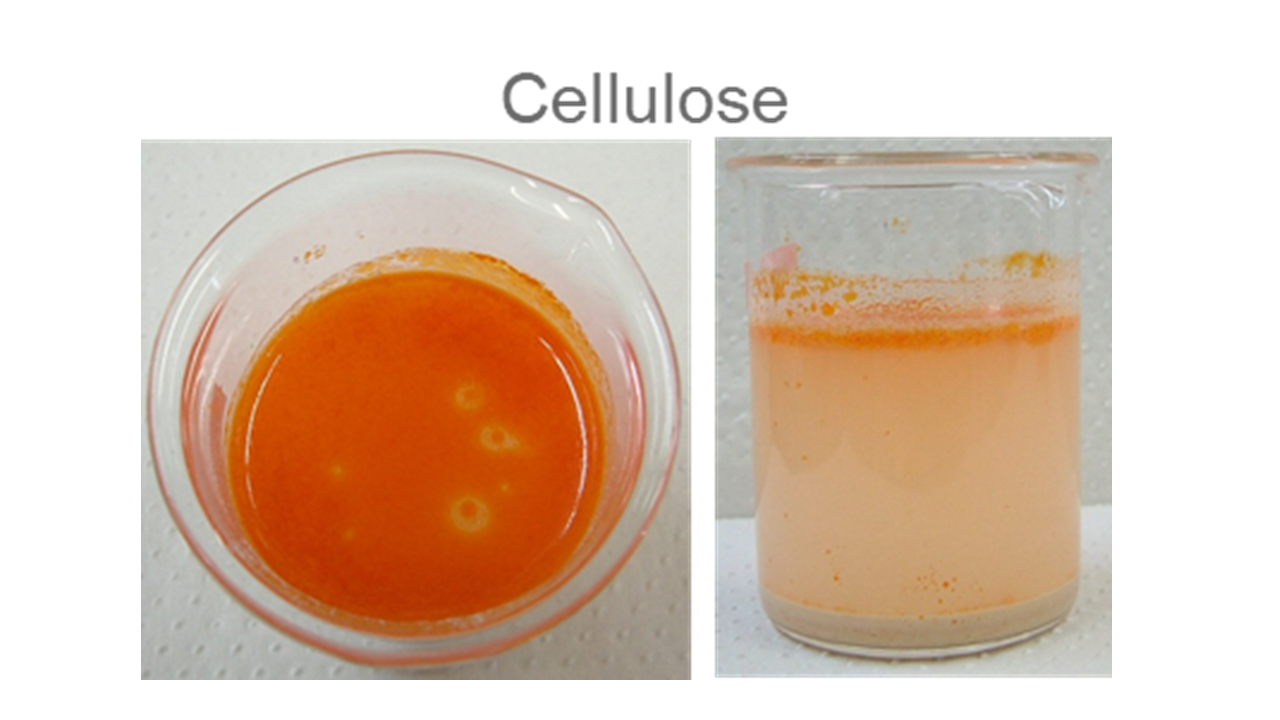
・Oil floats on the surface and cellulose precipitates on the bottom
・The solution is slightly muddy
- 2-3 Human Trials
It was shown in human trials that PROFIBER intake generally reduced body weight and body fat percentage. Blood tests also showed good results for subjects whom triglyceride levels before the trial were outside the reference range reducing the number of fats. It was also confirmed that when the intake of PROFIBER was stopped, indexes showed tendency to return to their original states.
Trial Outline
・Subjects: nine 30 to 50 years old men (average age: 42.8 years old)
・Dosage: 750 mg/day
・Trial period: Trial intake was conducted for 2 months, with subsequent stoppage for 1 month, samples were measured after each month
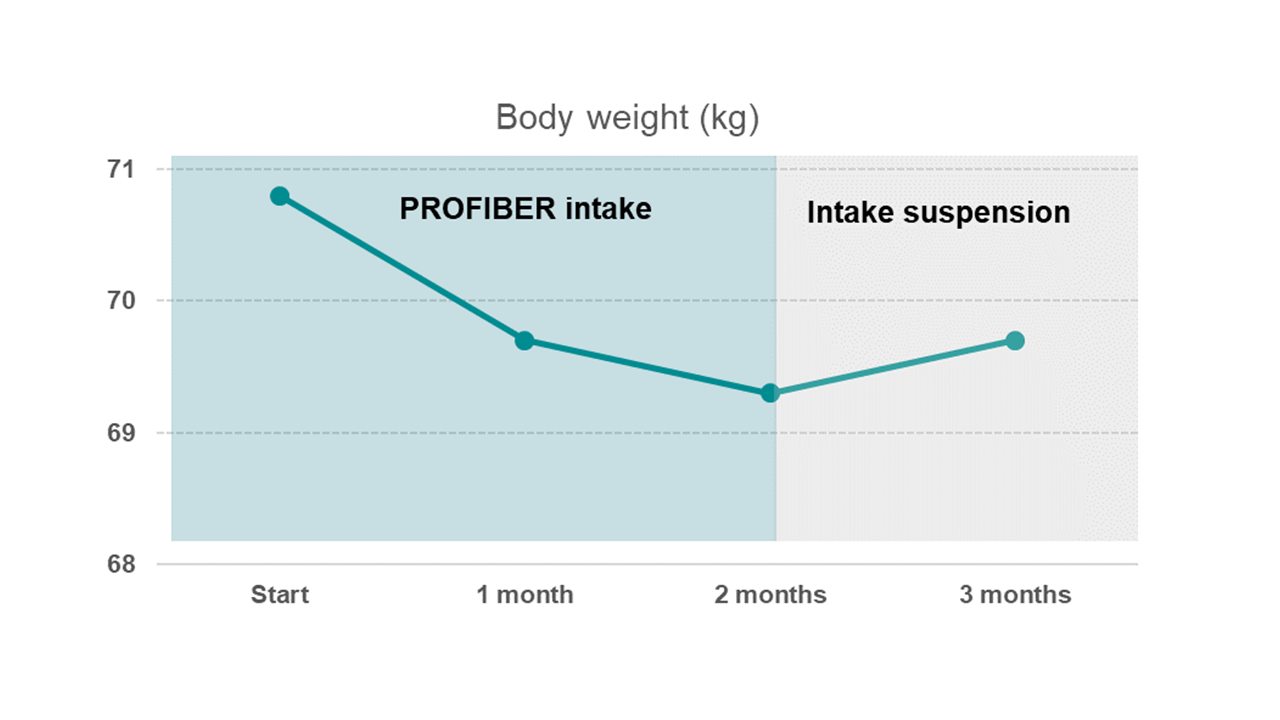
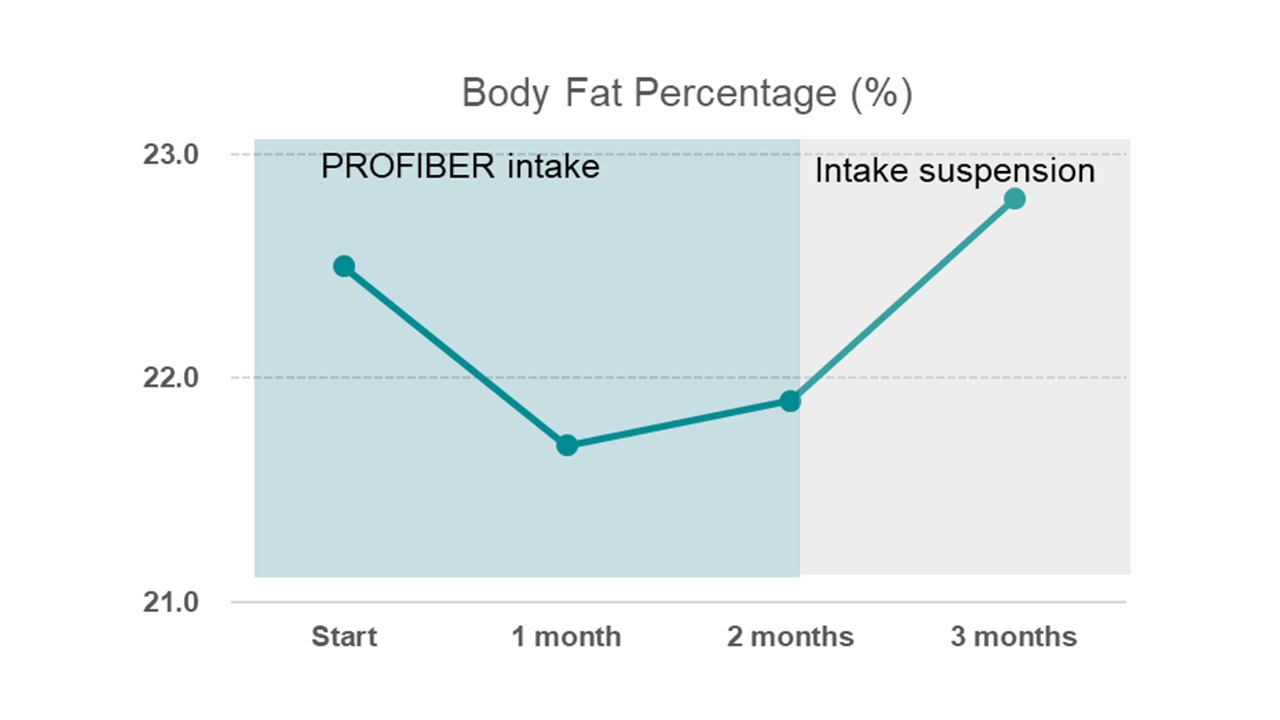
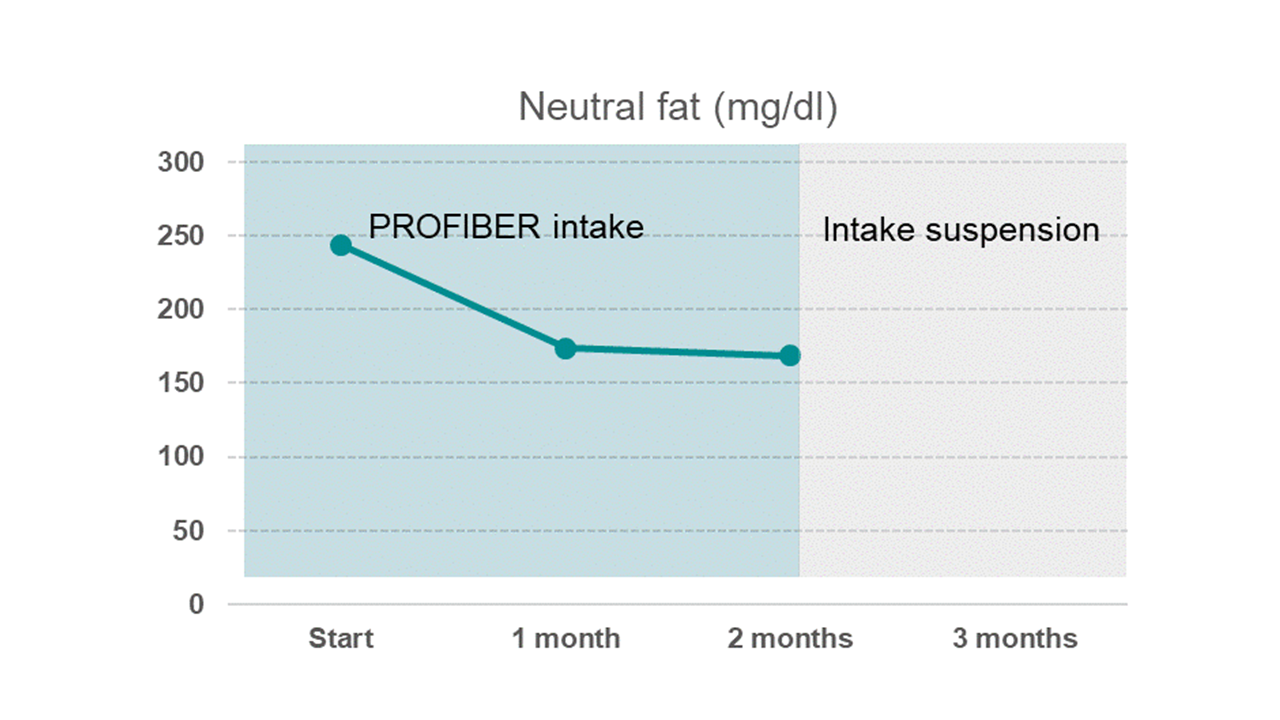
※The information on this page is intended for people in the health food industry, and does not claim any effects or efficacy of the product.
